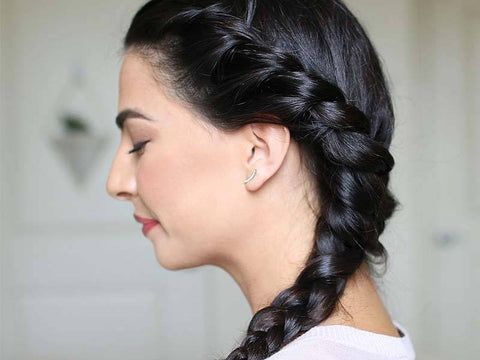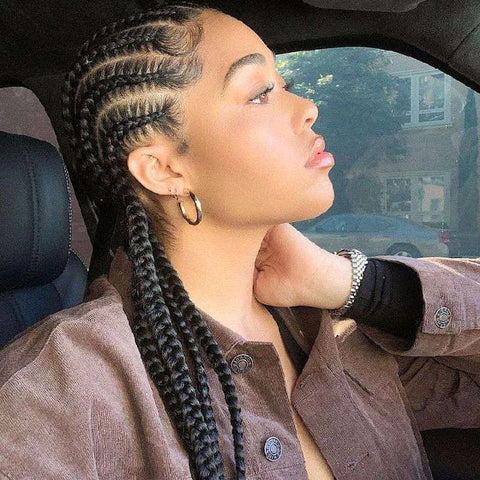Some people are unable to distinguish between braids and plaits based only on photos they have seen. A comparable hairstyle that is referred to as braids or plaits is frequently used interchangeably. Despite the fact that they appear to be so similar, people frequently interchange a few of the distinctions. However, plaits and braids can be parted. What makes one different from the other?

Plaits VS Braids What are the differences?
Both braids and plaits refer to hairstyles in which two or more strands of hair are braided. They are known as a protective hairstyle that prevents hair loss and breakage. There is almost no significant difference between braids and plaits, plaits are simply an old-school, traditional way to say braids, so it’s literally the same thing. But actually, from the perspective of professionals, there are still some subtle differences. Especially in black people’s culture. It is one of the favorite wig and sew-in hairstyles for black women because it is convenient and highly protective.1. Braids and plaits have different origins. In America, the popular woven hairstyle is called a braid, while in Britain and Australia, it’s known as a plait.
2. While plaits are typically braided over straight or wavy hairstyles, braids are typically done with curly or kinky hair.
3. Although braids are typically done on a person's own natural hair, they can also use hair extensions or other accessories, such as colored wires, textile yarns, or synthetic hair, to create interesting hairstyles.
4. Compared to plaits, braids are more complex. There are a lot more varieties of braids, but the term "plait" usually refers to the basic three-strand braid variety. When a French braid, Dutch braid, or fishtail braid has just one strand, it's sometimes referred to as a plait. A braid is made up of several plaits.
5. Braids are more tightly woven, and plaits are loosened and less dense. In the most of time, loose weaving is considered a plait, and tighter weaving is a braid.

The most common braid types
3 Strand Basic Braid/Plaits
1. Split the hair into three equal sections so you have a right middle, and lift a strand. Now cross the right strand over and into the middle; again, cross the right strand over and into the middle; then take the left strand and cross it over and into the middle.
2. Just repeat those steps until you reach the end of the hair and then tie the braid off with elastic rubbers. After you tie off the braid, you can pull on the sides of the hair to give the braid more volume.
French Braids/Plaits
1. Take a small section of hair on the top of your head, from your temples to the back of your head.Split the hair into three equal sections. Start out with 2 strands in your left hand.
2. Take the right strand and cross it over and into the middle. Again, cross the right strand over and into the middle and hold all the strands in your left hand. That way, it is easier to add new hair to the braid.
3. Pick up a horizontal section of hair on the same side and add it to the middle strand.Then cross the left strand over and into the middle and hold all of the strands in your right hand. Again, pick up a horizontal section of hair on the same side and add it to the middle strand. Then cross the right strand over and into the middle and bring all the strands to your left hand.Repeat the above steps.
4. When there is no more hair to add in, braid the hair like a normal 3 strand braid and tie of the braid at the end. Adjust the hair and pull in the sides of the hair to loosen the braid up a bit.
Cornrow Braids/Plaits
1. Take the hair and pinch it off into three sections. Make a basic 3-strand braid about 3 times.
2.Add hair. Pick up a horizontal section of hair on the same side and add it to the middle strand. Then cross the left strand over and into the middle, and hold all the strands in your right hand. Here you add hair, and you keep braiding, and you add hair on the same side as you go down.Simply finish the braid until you've used up the rest of your hair. Then secure the end of the braid with an elastic hair band.









